Search the Blog
Categories
- Books & Reading
- Broadband Buzz
- Census
- Education & Training
- General
- Grants
- Information Resources
- Library Management
- Nebraska Center for the Book
- Nebraska Memories
- Now hiring @ your library
- Preservation
- Pretty Sweet Tech
- Programming
- Public Library Boards of Trustees
- Public Relations
- Talking Book & Braille Service (TBBS)
- Technology
- Uncategorized
- What's Up Doc / Govdocs
- Youth Services
Archives
Subscribe
Category Archives: Pretty Sweet Tech
Pretty Sweet Tech: Podcasting Basics
 Have you ever considered a library-hosted podcast? With the right equipment, you could help patrons record and edit local podcasts and link them to your library’s website! Topics could range anywhere from book and movie reviews to local/ state history, and anything in between! Read on to learn how you can make this happen in your library:
Have you ever considered a library-hosted podcast? With the right equipment, you could help patrons record and edit local podcasts and link them to your library’s website! Topics could range anywhere from book and movie reviews to local/ state history, and anything in between! Read on to learn how you can make this happen in your library:
What is a Podcast?
Podcasts are audio recordings that are geared towards providing new information, entertainment, or asking listeners to look at topics from a different point of view. Podcasts can have a single host/narrator, have a more conversational format between multiple hosts, or be an interview between host and guest. There’s no one right way to podcast!
How Can We Plan a Podcast?
There are a ton of resources out there for how to plan and record your own podcast. I’ll put a few pointers that have worked for some other libraries here, then add some additional resources at the end of the list:
 Target Audience: Try to anticipate who your target audience is. You don’t want to use teen slang for a podcast about retirement getaways!
Target Audience: Try to anticipate who your target audience is. You don’t want to use teen slang for a podcast about retirement getaways!- Length: Start asking potential listeners how long they like their podcasts. If your listeners only have time for 15 minutes, don’t record an hour long podcast!
- Topic: Start listening around. Find out which podcasts exist about your preferred topic. Listen for what works and what doesn’t work for you.
- How to Record: Some hosts record all in one, long segment. Others record in short bursts and stitch the sections together. Short bursts leave room for error.
- Ad Lib or Script? Some hosts plan their show down to the last word. Others wing it. It’s really up to your comfort level. Kids and teens might need structure.
- Where to Host? Think about what you need to be able to do with your recordings when you’re done. Some hosting options like Lisbyn have editing features and will help you sync the podcast to your website. But it can cost a bit. Podbean is an option if you want to start with free and grow. Free doesn’t have as much functionality, but everybody starts somewhere!
Here are some start to finish guides for planning a podcast:
- The Podcast Host: Podcast Scripting: How Do I Write a Podcast Script?
- Shopify: How to Start a Podcast: (for Under $100)
- The Podcast Host: How to Start a Podcast in 18 Steps
- The Podcast Host: Best Podcast Equipment: Your Ultimate Guide
As you can see, pretty much everything you need is on The Podcast Host. They know all, and I’ve used a lot of their stuff when learning how to use our makerspace audio kit stuff. Happy podcasting everyone!
Posted in General, Pretty Sweet Tech, Technology
Leave a comment
Pretty Sweet Tech: Makerspace Highlights
I’ve been running around creating makerspace goodness this week, so this is going to be a short post. It’s all about makerspaces and some of the cool things you can get for your makerspace. This is great whether you’re just starting out, or want to spice up your existing offerings:
Merge Cube: This looks like a little foam cube, but it is oh, so much more. Paired with a smartphone, you can overlay amazing 3D images onto this magical little cube. Take a look at the video on Merge Cube’s home page to see it in action. There are ways to use pre-made projects, or to create your own using an app!
 Dash and Dot Robots: These robots are great for kids of all ages. Dash is geared towards kids 6 and up, while Dot is geared for kids 11 and up. But adults can use them too! I’m a big kid now. These robots have plenty of great pre-made curriculum and project ideas too!
Dash and Dot Robots: These robots are great for kids of all ages. Dash is geared towards kids 6 and up, while Dot is geared for kids 11 and up. But adults can use them too! I’m a big kid now. These robots have plenty of great pre-made curriculum and project ideas too!
LEGO Mindstorms: This is a robot that will let you build the actual bot, then program it as well! I train this one for the Innovation Studios grant, so I can answer a bunch of questions about this one. It’s geared towards 8 and up, but it has a lot of flexibility to be hacked by adults too. Good times.
Paper Circuits: If you’re looking for low-cost ways to show the basics of circuitry and electronics, this book is a great place to start. Makerspaces.com also has quite a few other project ideas.
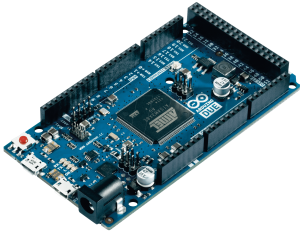 Arduino for Beginners: Makerspaces.com also has this great book showing you everything you need to know about Arduino for beginners. You’ll learn how the board works, some simple circuits, and to interact with the right software.
Arduino for Beginners: Makerspaces.com also has this great book showing you everything you need to know about Arduino for beginners. You’ll learn how the board works, some simple circuits, and to interact with the right software.
There are plenty of other makerspace options out there. But this is a start. I chose mostly all low-cost options. The bigger machines like 3D printers, laser cutters, vinyl cutters, and all that fun stuff are also out there. Feel free to email me at amanda.sweet@nebraska.gov if you have any questions, or would like some recommendations.
Posted in General, Pretty Sweet Tech, Technology
Tagged makerspaces, Pretty Sweet Tech
Leave a comment
Pretty Sweet Tech: DigitalLearn for Digital Skills!
If you have library patrons who are just starting to use computers, or want to learn more about how to use them well, DigitalLearn, made by the Public Library Association (PLA) is a good way to go. They cover everything from why we need computers, to online privacy basics, and tips for buying plane tickets online.
Who Should Use This Resource?
 If you’re wondering who this resource is geared towards, the blurb on top of DigitalLearn’s site says it all: “If you are new to computers, haven’t used them for a while, are a little unsure and uncomfortable, or just need a bit of a refresher, we have the tools to help you tackle technology at your own pace and gain the confidence you need to succeed.”
If you’re wondering who this resource is geared towards, the blurb on top of DigitalLearn’s site says it all: “If you are new to computers, haven’t used them for a while, are a little unsure and uncomfortable, or just need a bit of a refresher, we have the tools to help you tackle technology at your own pace and gain the confidence you need to succeed.”
The site is written in clear, easily understood language. Each tab has a set of short videos, each video has a PDF version, just in case users learn better by reading instead of watching videos. Everybody learns differently. Some of the videos also have additional worksheet exercises users can fill out if they want more guidance on the path towards computing.
How Can Librarians Use This to Help Patrons in Person?
DigitalLearn has several pre-made courses, complete with handouts and materials, for you to teach classes in person at your library. Each section has an Instructor’s Guide, Activity Sheet, and a Handout. Some of the classes have PowerPoint presentations, practice files and a few other things. All in all, these materials will make it a whole lot easier for you to start offering more digital literacy in your library. Without having to take time to create materials from scratch. It’s a win-win!
Nebraska Library Commission’s Upcoming Digital Literacy Class
We’re gearing up for more digital literacy here at the Library Commission as well. The course is still being researched and put together, but if you have any recommendations, feel free to comment on this post, or email amanda.sweet@nebraska.gov.
Posted in Education & Training, Pretty Sweet Tech, Technology
Tagged digital literacy, Pretty Sweet Tech, technology
Leave a comment
NCompass Live: Pretty Sweet Tech – Use Website Building to Launch into Virtual & Augmented Reality!
 Learn how to ‘Use Website Building to Launch into Virtual & Augmented Reality!’ on the next FREE NCompass Live webinar, on Wednesday, June 12, 10:00am-11:00am CT.
Learn how to ‘Use Website Building to Launch into Virtual & Augmented Reality!’ on the next FREE NCompass Live webinar, on Wednesday, June 12, 10:00am-11:00am CT.
New special monthly episodes of NCompass Live! Join the NLC’s Technology Innovation Librarian, Amanda Sweet, as she guides us through the world of library-related Pretty Sweet Tech.
Did you know that building a website can be a great launching pad into virtual and augmented reality? Many libraries are doing Hour of Code and website building activities as an introduction to the wonderful world of coding. But what comes next? What are our goals for learning technology in the future? This webinar will provide you with the following:
- A brief overview of what augmented and virtual reality are, and how they are used
- Some possible roadmaps to start with website development skills (HTML, CSS, Javascript, design, etc.)
- Ways to build off of these web skills to launch into VR and AR
- Some examples of what can come next
This webinar is geared towards the curious and beginner/intermediate coders. It’s time to build a strong foundation for future tech skills. Discover what’s out there.
Upcoming NCompass Live events:
- June 19 – Growing Partnerships Where Least Expected
- July 3 – Pretty Sweet Tech
- July 24 – The Golden Sower Award: Nebraska’s Children’s Choice Literary Award
- July 31 – How Does Your Library Garden Grow?
- Aug. 7 – Life in Fort Schuyler: The Challenges Faced at the SUNY Maritime College Library
- Aug. 14 – Pretty Sweet Tech
- Aug. 21 – Research – the Key to Library Design
- Aug. 28 – Eliminating Late Fines is a Win-Win for Your Library and Community
 For more information, to register for NCompass Live, or to listen to recordings of past events, go to the NCompass Live webpage.
For more information, to register for NCompass Live, or to listen to recordings of past events, go to the NCompass Live webpage.
NCompass Live is broadcast live every Wednesday from 10am – 11am Central Time. Convert to your time zone on the Official U.S. Time website. The show is presented online using the GoToWebinar online meeting service. Before you attend a session, please see the NLC Online Sessions webpage for detailed information about GoToWebinar, including system requirements, firewall permissions, and equipment requirements for computer speakers and microphones.
Posted in Education & Training, Pretty Sweet Tech, Technology
Tagged libraries, NCompLive
Leave a comment
Pretty Sweet Tech: Who Regulates the Internet?
 If somebody walked up to your library’s reference desk and asked “who regulates the internet? What if I see something bad?” What would you say?
If somebody walked up to your library’s reference desk and asked “who regulates the internet? What if I see something bad?” What would you say?
Honestly, this is a tough question because the answer varies so much. By and large, there isn’t much regulation from any one governing body in the United States. Let’s dig a little deeper into this idea by breaking it down into smaller categories:
Online Advertising
Ads online are regulated on several levels:
Federal: The Federal Trade Commission has a set of resources available to learn about guidelines, rules, and recommendations for buyers and sellers online.
State: According to Truth in Advertising.org, Nebraska has a Consumer Protection Division through the Office of the Attorney General that files complaints against false advertisements. The also includes a link to Nebraska’s advertising laws.
Self-Regulated: Many website and organizations are also setting their own policies for advertisements on their pages. A thorough example is Google’s Ads Policies.
Online Content
Removing harmful content like fake news, hate speech, instructions for how to perform criminal acts, and other poor online behavior is largely self-regulated from site to site. The internet is a big place and it’s hard for a large regulatory authority to grapple with that much content. Right now it’s most’y up to websites and all of us to self-regulate and report harmful content directly to sites like YouTube, Facebook, or Google.
Access to Internet
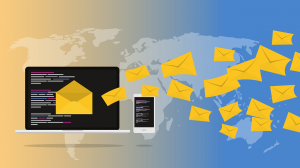 Federal: The Federal Trade Commission has a set of policies in place for access to the internet and how people can be charged for services. These policies only pertain to communications online, like email, VoIP services, and some connectivity issues.
Federal: The Federal Trade Commission has a set of policies in place for access to the internet and how people can be charged for services. These policies only pertain to communications online, like email, VoIP services, and some connectivity issues.
The debate over Net Neutrality has been raging for quite some time. Rather than hash out the whole debate in this post, check out the current state of affairs by looking at the National Conference of State Legislatures’ Net Neutrality 2019 Legislation. There’s a chart on this page that will let you know what Nebraska is doing in comparison to other states. You can also check out this video: BBC What is Net Neutrality?
Summary
The internet is basically a whole other world. Under which regulatory authority would you place internet services? The internet does communication, data collection, advertising, online commerce, and pretty much everything under the sun. Who regulates what?
For now, libraries can start connecting people with existing resources, and start to get people thinking about what they would like to see out of the internet. What helps, and what hurts in the world wide web?
Posted in General, Pretty Sweet Tech, Technology
Tagged internet, Pretty Sweet Tech, technology
Leave a comment
Pretty Sweet Tech: Is Your Website Mobile Friendly?
Think about the last time you checked the hours of a business. Were you at home or running around town? Were you on a mobile device? Do you have a smartphone?
Statista.com shows that 48.71% of all web traffic comes from a mobile device. That number is estimated to climb higher in coming years. For this reason, many companies are adopting what they call “mobile first” strategies. This means they are optimizing their websites for smartphone screens and tablets. Sadly, this also means it may get harder for people without smartphones to access the information they need. Times are changing, and in some ways not for the better.
 This also means libraries will have to adapt to stay relevant in a mobile-first world. Library customers are used to user experiences on Amazon, Google, and large department stores. If our library websites don’t have the same visual appeal, they probably won’t stay long. New customers will also be less likely to take action and come into the library.
This also means libraries will have to adapt to stay relevant in a mobile-first world. Library customers are used to user experiences on Amazon, Google, and large department stores. If our library websites don’t have the same visual appeal, they probably won’t stay long. New customers will also be less likely to take action and come into the library.
So what can we do? If you’re familiar with web development, start by looking into responsive design and fluid layout as a way to make mobile-first happen. This will allow your content to automatically detect the size of the screen and display content properly. Just make sure your font sizes are legible and your objects are a good size for adult fingertips to activate. There are other ways to do this, including building a separate design for popular screen sizes, but that takes a lot more time and energy to maintain.
Mobile-first means we build for mobile, then make sure it works for desktop, rather than designing for desktop screens and hoping for mobile. If users have to scroll from side to side a lot, or zoom in and out to navigate and read text, they won’t stay on your site long. Next time you visit a website on your phone, think about why it works or doesn’t work for you, and why you click away. Stick with what works for your library.
 But what if you’re not a developer, or don’t have that kind of time? Luckily, all you need are the right tools! WordPress is a great content management solution that makes it quick and easy to set up and maintain websites. Google “best responsive WordPress themes”. Choose one, make a quick test site, then hop on your mobile device and take it for a test drive. Can you read the text without zooming much? Can you click buttons without zooming, or missing the button? Is the navigation menu easy to use?
But what if you’re not a developer, or don’t have that kind of time? Luckily, all you need are the right tools! WordPress is a great content management solution that makes it quick and easy to set up and maintain websites. Google “best responsive WordPress themes”. Choose one, make a quick test site, then hop on your mobile device and take it for a test drive. Can you read the text without zooming much? Can you click buttons without zooming, or missing the button? Is the navigation menu easy to use?
If that seems easier said than done, give me a call and we can walk through the steps of mobile-first design for your library’s website. If you already go through Nebraska Libraries on the Web, I can help you find a new, more responsive WordPress theme. If you want to make the switch, let me know at amanda.sweet@nebraska.gov.
To learn more about Mobile-first design, check out these resources:
Responsive, Mobile-First Design Matters Now More Than Ever (Intertech)
2019 Web Design Trends (Ironistic)
Posted in General, Pretty Sweet Tech, Technology
Tagged technology, web development, website design, WordPress
Leave a comment
Pretty Sweet Tech: Smart Device Security
What if someone hacked your smart device and started talking to your baby through a baby monitor? It’s chilling, but it happened in Detroit. Smart homes are the cool new thing, but how do we secure our homes in a digital world?
Possibilities of Using Smart Devices
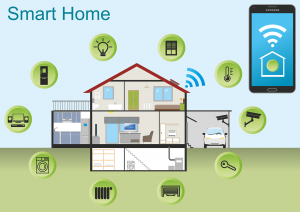 Some of you may have an Amazon Echo or another smart device nestled quietly in our living room. Other hardware can connect through Wi-Fi through a central smart device and you can control your home through voice commands or an app.
Some of you may have an Amazon Echo or another smart device nestled quietly in our living room. Other hardware can connect through Wi-Fi through a central smart device and you can control your home through voice commands or an app.
There are smart thermostats, security cameras, baby monitors, webcams, alarm clocks, home security systems, lighting, vacuums, and more. Much more. This opens the door to some infinitely powerful opportunities. Possibly more smart libraries too!
Possible Risks of Using Smart Devices
Now onto the part nobody wants to know about: how can we get hacked?
Norton, a company that specializes in digital security, wrote 12 Tips to Help Secure Your Smart Home and IoT Devices. This article describes some common ways cybercriminals can hack into your smart devices:
- Router Hack: Cybercriminals can infect your router using malicious software, then sneak into your system through the backend.
- Security Cameras: Unsecured network connections linked to a security camera can allow access points for cybercriminals to spy on you through your camera.
- Data Misuse: Devices like your thermostat collect data about your home to run more efficiently. Unauthorized access to this data can allow cybercriminals to guess when you’re not home to break into your physical location.
I’ll leave it at those few examples for now. You can check out the article to learn more.
Smart Device Security
Now for the most important part. What can we do about this?
- Routers: This is something most consumers don’t think about. Here’s an article with more information about how to secure your wireless router at home.
- Firewall the Network: It’s hard to secure individual devices. But here is some more information about how to further secure your network and add firewalls.
- Strong Passwords: Check out the article above about using strong passwords to further secure your devices and data.
- Data Misuse: All the data collected by these devices has to go somewhere. It is stored and used by the company that made the device. Here is an article from the Institute of Electrical and Electronics Engineers (IEEE) describing data concerns when developing IoT. Remember to look at data policies from your devices.
Have fun with your Smart Devices. Remember to do all you can to keep yourselves safe. With great power comes great responsibility!
Posted in General, Pretty Sweet Tech, Technology
Leave a comment
Pretty Sweet Tech: Libraries Ready to Code
 Coding is no secret. In fact, there’s an almost paralyzing amount of information available to people. So much that it can be difficult to decide where to start and where to go next. Knowledge of computers and technology is rapidly becoming vital to life, but many people don’t have a computer science or technology background. And that’s okay.
Coding is no secret. In fact, there’s an almost paralyzing amount of information available to people. So much that it can be difficult to decide where to start and where to go next. Knowledge of computers and technology is rapidly becoming vital to life, but many people don’t have a computer science or technology background. And that’s okay.
In 2017, the American Library Association (ALA) and Google saw this and partnered together to make Libraries Ready to Code. Librarians and educators from 30 different libraries worked on their own project to decide what “coding” means to them and how to best introduce it to their own communities. The result is s set of tools that has been made freely available to us all.
This resource is geared towards all experience levels, so you can filter resources by experience level: “I’m Getting Started”, “I’ve Had Some Practice”, and “I’m Experienced”. Some of these resources are further divided into subject categories like art and fashion, while others are parceled out by recommended age range. Either way, this resource is a great place to connect K-12 students with computational thinking and “coding” skills.
 But keep in mind that this is just a drop in the bucket of what is available. Not everyone learns the same way either. Feel free to look to these learning tools as inspiration to build your own. Think of Libraries Ready to Code as a starting point on the long road towards future-ready technology.
But keep in mind that this is just a drop in the bucket of what is available. Not everyone learns the same way either. Feel free to look to these learning tools as inspiration to build your own. Think of Libraries Ready to Code as a starting point on the long road towards future-ready technology.
Keep an eye out for students who devour every resource on this list, then ask for more. Ask them what they want to learn, then do a little digging to find out which resources you need to make it happen. You might not know every line of code that makes a product work, but you can connect interested students with the information they need to learn.
At one time, information took the form of books and journal articles. Now that information may appear in a Raspberry Pi or YouTube video. It’s time to curate our ever-changing resources. But do yourself a favor and don’t try to learn every bit of technology on the planet. You would be in for a world of hurt.
Start asking students to teach as they learn. There is no telling what people are capable of when given the tools to learn. Take a look at this Virtual Reality headset and software built by a group of high school students in France. Their passion was to make technology accessible to all income levels. They learned more thoroughly with the intent to teach. Virtual Reality, Augmented Reality, machine learning and more are all at our fingertips.
Technology is not slowing down, and neither are libraries. We can work together to curate resources and pave the way towards a better future.
Posted in General, Pretty Sweet Tech, Technology, Uncategorized
Tagged coding, Pretty Sweet Tech, technology
Leave a comment
Pretty Sweet Tech: Flame Wars and Trolls, Oh My!
The other day I came across a forum called “How to Deal With Flaming Trolls”. I won’t link to it here because the content took a turn about halfway through. But it is an important topic.
 Lifewire defines ‘flaming‘ as a “means to attack someone verbally online…flaming is about hurling insults, transmitting bigotry, name-calling, or any outright verbal hostility”. The meaning of ‘trolling‘ seems similar, but “an internet troll is an abusive or obnoxious person who purposely seeks to get a rise out of others, either online or in real life”. Basically, a troll is a habitual flamer. You can see how the forum took a turn halfway through.
Lifewire defines ‘flaming‘ as a “means to attack someone verbally online…flaming is about hurling insults, transmitting bigotry, name-calling, or any outright verbal hostility”. The meaning of ‘trolling‘ seems similar, but “an internet troll is an abusive or obnoxious person who purposely seeks to get a rise out of others, either online or in real life”. Basically, a troll is a habitual flamer. You can see how the forum took a turn halfway through.
Anyway, different online platforms will deal with flaming and trolling in different ways. Many private, moderated forums will have a written policy for this situation. A good example is Mozilla’s Forum Etiquette ground rules. Their number one rule is to “Be Civil: No personal attacks. Do not feel compelled to defend your honor in public. Posts containing personal attacks may be removed from the news server”.
I like this example because Mozilla didn’t use any special jargon to remind people to be a good person. They also firmly reminded users not to rise to the bait to try to “defend their honor in public”. Being unjustly defamed in public is a big cause for flame wars. For bonus points, read the “Let Sleeping Dogs Lie” section. Wise words Mozilla. Wise words.
 Mozilla’s Etiquette guide also does a great job of reminding people to ignore trolls and flamers. It does more harm than good to engage in cyclical discussions. But there is one thing I would like to point out: this forum is mostly used by adults.
Mozilla’s Etiquette guide also does a great job of reminding people to ignore trolls and flamers. It does more harm than good to engage in cyclical discussions. But there is one thing I would like to point out: this forum is mostly used by adults.
Many libraries deal with teaching children and teens online etiquette and cyber bullying prevention techniques. Much of this behavior occurs on social media or on forums that are not closely monitored. Many of us also know that impulse control is not always well-honed at this age.
Etiquette rules are more important and need to be monitored and enforced more closely at this age. Practice, repetition, and positive reinforcement is also helpful. We also can’t focus solely on our younger patrons. People of all ages could use a reminder of how to treat others respectfully, especially when we can hide behind a digital avatar.
Here are a few resources to learn about cyber bullying, flaming, and digital etiquette:
Stopbullying.gov: cyberbullying, signs of cyberbullying, and prevention tactics.
Very Well Family has an article about 5 Things to Teach Your Kids About Digital Etiquette
BrainPop has a combination of free and paid Digital Etiquette resources for educators. These are nice to have because they are animated and gamified for younger learners.
Posted in Pretty Sweet Tech
1 Comment
Pretty Sweet Tech: Finding Free Images Online
Libraries the world over are using images from the web to build websites and other cool projects. It’s easy to do a quick Google search, find some cool stuff, copy, and paste. This is not always exactly legal though. This post will give you the briefest of brief overviews of image copyright, then dive into how to find copyright free images on the web.
What is Image Copyright?
F irst of all, image copyright can get complicated. Only a copyright lawyer will be able to give you sound legal advice about images. That being said, MIT put together a useful slide set about what copyright is and a Fair Use Quiz. Here’s a helpful rule of thumb from their slides: “if you are not the creator of the work, you don’t have the legal right to copy, share, or display a photo, figure, music, video or a piece of text that you did not create, and you could face penalties if you do so”.
irst of all, image copyright can get complicated. Only a copyright lawyer will be able to give you sound legal advice about images. That being said, MIT put together a useful slide set about what copyright is and a Fair Use Quiz. Here’s a helpful rule of thumb from their slides: “if you are not the creator of the work, you don’t have the legal right to copy, share, or display a photo, figure, music, video or a piece of text that you did not create, and you could face penalties if you do so”.
The exception to the rule is the somewhat murky fair use of copyrighted material. The Fair Use Quiz also has a handy table describing the factors that go into determining fair use. Copyright.gov also has a lot more information about copyright law and application.
What are Free-to-Use Images?
 Here’s some good news! There are some images where the author automatically made their stuff free for commercial and public use! You’ll know you found one because it will say “Free for Commercial Use, No Attribution Required”. Some may be free with attribution, meaning you need to add a small caption with the creator’s name, and possibly the original website from which the image came.
Here’s some good news! There are some images where the author automatically made their stuff free for commercial and public use! You’ll know you found one because it will say “Free for Commercial Use, No Attribution Required”. Some may be free with attribution, meaning you need to add a small caption with the creator’s name, and possibly the original website from which the image came.
Finding Free-To-Use Images
- Google has an advanced search tutorial to filter results to free to use images
- Pixabay has a wide variety of free images. There is an optional donation to the author and to keep the site running. It’s also free to set up an account!
- Search Engine Journal put together a list of 41 Places to Find Free Images Online That You Will Actually Want to Use. Some sources also have video clips.
That list should keep you busy searching for a while. I hope you all have a fun, safe search!
Posted in General, Pretty Sweet Tech, Technology
Leave a comment
Pretty Sweet Tech: Do Libraries Need Their Own App?
Recently I was asked an age old question: do libraries need their own app? To answer that, let’s take a look at how apps are made:
- An Idea is Born: Your library has identified a need in the community. You have explored different technology options to solve this need and discovered an app will reach the most people since more patrons own smartphones than computers.
- Designing the App: You put your dream team together and brainstorm how this app will work. What are your main goals? What do you want people to get out of this app? How will the user interface look so it is easily navigated? There are many questions here. A simple navigation prototype in PowerPoint or on paper will work for getting ideas on paper.
- Getting User Feedback: Describe your app idea to your target audience. Is there interest in the app? Would people use it? Which devices do users have? Which platform should the app be built upon? iOS? Android? Both?
- Fundraising: Apps are not cheap to build. They take time to design, build and maintain over time. App development is a marathon, not a sprint. Depending on complexity, apps can take between $10,000 and over $200,000 for the initial build. Then $1,000 or more for monthly updates to keep the app working. More if you want a native built app across multiple platforms. Plus consulting fees.
- Development: If you’re developing in-house, you need to identify existing staff, or bring on new staff to complete the project. If you’re using an outside company, you’ll probably need to use a bidding process, then communicate clearly with the company to let them know what you want. This process takes time and effort.
- User Testing: It’s time to test your first build to see if it meets the need you intended. It may take time to raise awareness that the app exists and get people using it. User feedback can be tricky.
- Updates/ Maintenance: A good developer can translate user feedback into workable updates for product improvement, without losing (m)any features.
 All in all, a good app should suit a specific need, be well-designed for user navigation, and be updated regularly to retain users. Think about the apps on your phone. How many apps do you download and use consistently? What is the shelf-life of your apps? Which apps are competing for your attention? Think about what makes you repeatedly click an icon.
All in all, a good app should suit a specific need, be well-designed for user navigation, and be updated regularly to retain users. Think about the apps on your phone. How many apps do you download and use consistently? What is the shelf-life of your apps? Which apps are competing for your attention? Think about what makes you repeatedly click an icon.
Can your library design an app that will stand the test of time for your patrons? You won’t know until you try.
Posted in General, Pretty Sweet Tech, Technology
Leave a comment
Pretty Sweet Tech: Virtual Reality Uses and Pitfalls
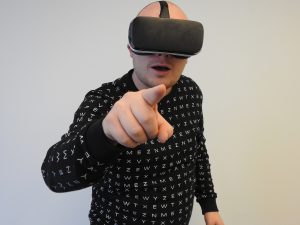 For a while now, I’ve been gathering different resources about virtual reality and how it can be used in different industries. Here’s some cool collections of VR inspiration for your library:
For a while now, I’ve been gathering different resources about virtual reality and how it can be used in different industries. Here’s some cool collections of VR inspiration for your library:
Beyond Gaming: 10 Other Fascinating Uses for Virtual-Reality Tech (Live Science)
Applications of Virtual Reality (Virtual Reality Society)
25 Best Google Cardboard Apps for iOS and Android (Think Mobile) This is a good, low-cost way to test out VR if you’re just getting started. Just get a Google Cardboard for about $10 and download some apps on your phone.
If you’re looking for more advanced options, here are some things to watch out for as you’re searching for VR opportunities:
1. If you’re using a mobile app with Google Cardboard or another headset designed to use a smartphone as a screen, think about which smartphones you’re going to use. There will be different apps for iPhone and Android. Not all are created equally.
2. Using a Bring Your Own Device (BYOD) for smartphones to be used in headsets can be tricky. Some apps don’t work with different phone models. You might want a library device available for patron use when their own phone isn’t compatible.
3. When choosing a more expensive headset like the Oculus Go, Oculus Rift, HTC Vive, or Playstation VR, or another headset, consider additional hardware expenses. Headsets like the Oculus Rift need to be hooked up to a computer with a really good graphics card. This graphics card can get pricey.
 4. Not all games for the more expensive sets will work for every set. When games are designed, they are generally designed for a specific platform. So if you tested out National Geographic apps on Oculus Go, they won’t necessarily be available on every other headset. If you need a specific app, keep that in mind.
4. Not all games for the more expensive sets will work for every set. When games are designed, they are generally designed for a specific platform. So if you tested out National Geographic apps on Oculus Go, they won’t necessarily be available on every other headset. If you need a specific app, keep that in mind.
5. Many headsets have free options. You might want to start out with these and only add in a few paid options as you go along. This can keep costs down and allow your VR library to scale slowly.
VR is pretty awesome, so don’t let the potential pitfalls get in your way. It is just something to keep in mind as you’re choosing VR options and working out budgets. Feel free to email me at amanda.sweet@nebraska.gov if you have any VR questions.
Pretty Sweet Tech: Where is the Humanity in STEAM?
A push to add Art to STEM (Science, Technology, Engineering, and Math) learning took storm a while ago. Then technology took over the world. But what about the humanities? The study of people is what made most technology possible. Ethnography, anthropology, psychology, linguistics, literature, and ethics are the driving force behind how and why technology is created, marketed, and how technology influences society as a whole.
Natural language processing would not be possible without breakthroughs in linguistics. Virtual reality games wouldn’t be very interesting without a good plot line to draw in gamers. Video game designers use psychology to study their target market and cater their product to the needs of the gamer. The internet is changing the way people think and interact with the world at large. To steer technology creation and use towards a positive impact on humanity, the humanities must be considered.
That is what we are doing with digital citizenship. We are asking people to look at how technology impacts themselves and others. We are asking people to look at the world today and ask themselves if their actions are making a positive impact on those around them. That is the core of ethics. What is the world today, and what do we want the world to be? How can we make a change towards the better? Can we agree on what makes life better, then work together to build a movement towards positive change?
Ethics teaches us to look at the complex nature of humanity and decide where we want to fit in the world. Are we making a positive contribution to our friends and community? What happens when everyone goes along with the status quo? What makes us do the things we do and how can we identify the need for change. Ethics.
Digital literacy will require us all to ask ourselves some hard qu estions. We are teaching kids to build an online identity that will make them look good to their friends and future employers. But what is their identity after they log off the computer? Making a positive impact in our small corner of the world means building introspection, empathy, and deciding who we are as individuals. How does an individual fit into their community? How does our community fit into the world? What can one human do?
estions. We are teaching kids to build an online identity that will make them look good to their friends and future employers. But what is their identity after they log off the computer? Making a positive impact in our small corner of the world means building introspection, empathy, and deciding who we are as individuals. How does an individual fit into their community? How does our community fit into the world? What can one human do?
There is no simple worksheet or lesson plan that will instill this thinking into growing learners. This will take large scale change in the world. It will mean looking at how technology affects us as individuals. It will mean guiding the use and creation of technology towards a greater purpose. There are no easy answers here.
Knowing how to use a tablet, a smartphone, a computer, and choosing the best device to suit your purpose is a good start. It opens doors to endless possibilities. But using that technology to shape yourself and the world into a better place is the real challenge.
The humanities are the beating heart of digital literacy. Humanity can exist without technology. But technology shouldn’t exist without humanity. And right now, it seems like the H in STEAM is silent.
Posted in General, Pretty Sweet Tech, Technology
Leave a comment
Pretty Sweet Tech: Raspberry Pi: An Unexpected Discovery
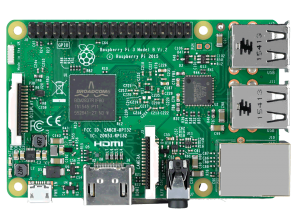 I’ve had a Raspberry Pi and a mess of electronics components sitting on my desk for several months. My original Pi plan was to demonstrate how Raspberry Pi could be used in a functional project that could be actively used in the library. So I set it up using Python Programming’s Raspberry Pi Tutorial series. I’ve dabbled in Python before, but not extensively. It was kind of fun to play in the terminal again.
I’ve had a Raspberry Pi and a mess of electronics components sitting on my desk for several months. My original Pi plan was to demonstrate how Raspberry Pi could be used in a functional project that could be actively used in the library. So I set it up using Python Programming’s Raspberry Pi Tutorial series. I’ve dabbled in Python before, but not extensively. It was kind of fun to play in the terminal again.
For those who haven’t used Python or Raspberry Pi, the Pi is a little $35 computer. But you do have to add your own monitor, keyboard, mouse, power supply and SD card. I use ‘$35’ loosely here. The Pi also has a set of GPIO pins that will let you add on motors, sensors, LED lights, and various other bits of electronic goodness. Python is a programming language that can be used for robotics, computer programming, machine learning, and many other things.
If you Google ‘Raspberry Pi Projects for Beginners’, you’ll get an overwhelming number of ideas. My problem was finding one that wouldn’t just be another cool thing sitting on my shelf. Finding the motivation to learn as an adult is drastically different than when you’re a kid. To devote the amount of time necessary to learn more complex electronics, I needed a project that would motivate and mean something to me personally.
Then I got to a tutorial in the series that told me to uninstall Wolfram Engine to save space. This isn’t the first tutorial that has recommended doing this, and nobody seemed to really know what Wolfram Engine is. So, being a good librarian, I looked it up.
From their website, “the philosophy of the Wolfram Language is to automate as much as possible, so programmers can concentrate on defining what they want to do, and the language will automatically figure out how to do it”. Stephen Wolfram explains it better in his explanatory video on the site’s homepage.
 Anyway, the language is fascinating, but what really interested me were the demonstrations of use that were categorized by subject. The demonstrations on this page show how math can make the real world come to life in a visual, sometimes interactive, diagram.
Anyway, the language is fascinating, but what really interested me were the demonstrations of use that were categorized by subject. The demonstrations on this page show how math can make the real world come to life in a visual, sometimes interactive, diagram.
I discovered that Wolfram can be used in machine learning. So I waded into Google’s Machine Learning Crash Course to learn more. After going through a good chunk of that crash course, I returned to the demonstrations available on Wolfram’s website and explored them through a different lens.
You can learn a lot about how artificial intelligence works by playing Rock, Paper, Scissors with AI Player. This player is found in the Life Sciences- Psychology section of the demonstrations. Machine learning looks for patterns the developer tells the program to look for and learn from. If you look in the “details” section below the player, you can see the factors that went into the algorithm behind the AI Player.
These factors are rooted in psychology. Other developers might place emphasis on different factors. This is a good reason to question the basis of machine learning algorithms. Depending upon the application for machine learning, we might all want to start looking deeper into the patterns these algorithms are told to look for in the data.
I digress. After returning to Wolfram, I then returned to the Pi. From a $35 computer, I discovered a fascination with machine learning. That led to a fascination with robotics and augmented reality. I returned to the Pi and still couldn’t find a project that really interested me for the library. It’s difficult to force learning when there is no real interest. But without the Pi, I would never have discovered a fascination with those other topics.
 So what did I learn? Sometimes your learning outcome is drastically different from what you set out to learn. If you follow your natural curiosities and let them lead you where they may, you can discover a depth of passion that was previously unimaginable.
So what did I learn? Sometimes your learning outcome is drastically different from what you set out to learn. If you follow your natural curiosities and let them lead you where they may, you can discover a depth of passion that was previously unimaginable.
Given the right tools and information paths, your patrons could use the Pi to learn the basics of computing and pair it with other information sources and subject matter experts to create something the world has never seen. You can’t force learning, but you can encourage self-discovery.
Posted in General, Pretty Sweet Tech, Technology
Leave a comment
Pretty Sweet Tech: Does Everyone Need to Learn Coding?
It  has been well established that everyone can learn to code. But “coding” is a very broad term that can apply to a lot of different things. Coding skills are used in web development, robotics, software development, machine learning, virtual reality, augmented reality, Internet of Things, and much more. But if a student is going to become an artist, graphic designer, marketer, sports therapist, or any other profession under the sun, why do they need to learn coding? How will technology affect their chosen professions?
has been well established that everyone can learn to code. But “coding” is a very broad term that can apply to a lot of different things. Coding skills are used in web development, robotics, software development, machine learning, virtual reality, augmented reality, Internet of Things, and much more. But if a student is going to become an artist, graphic designer, marketer, sports therapist, or any other profession under the sun, why do they need to learn coding? How will technology affect their chosen professions?
Honestly, many learners may never go in-depth into the coding process. But it helps to have the exposure. How does anyone know they like something unless they try it first? That being said, even if everyone doesn’t learn coding, they should know about technology. All of the tech I mentioned will have a huge impact on every profession. We’re already starting to see that happen.
Internet of Things is working towards making smart cities and communities. Machine learning is powering many popular search engines. Virtual reality is becoming more popular to train new employees across industries. Augmented reality is being used in manufacturing and other industries to label parts and pieces for assembly. That is just a drop in the bucket of examples.
Different professions are also inspiring the design and creation of new technology. There is now a robot that is folded like a piece of origami. When the material is heated, it unfolds itself. This is being used for internal medication delivery in experimental medicine.
 The study of animal locomotion and biomechanics has been used in robotics for quite some time. If a robot needs to thrive in a desert, why not give it the attributes of an animal that thrives in the desert? Computer networking is inspired by how bees communicate.
The study of animal locomotion and biomechanics has been used in robotics for quite some time. If a robot needs to thrive in a desert, why not give it the attributes of an animal that thrives in the desert? Computer networking is inspired by how bees communicate.
Psychology and sociology comes in handy when designing a virtual world that will not harm the user, whether mentally or physically. Those two fields also comes in handy when marketing the finished product for commercial use. Historians and ethnographers may be interested in how technology has shaped or will shape individuals and society as a whole.
Long story short, everyone may not need to know coding, but in the near future, every profession will likely need to collaborate with someone who does code. This means having knowledge of how technology works, how to break information down into steps, and how to provide useful information during the design and iteration process.
Having at least minimal understanding of HTML and CSS may go a long ways towards walking a mile in a coder’s shoes. Knowledge of how technology works will also help individuals seek new and innovative ways to help shape the future of their chosen profession. Learning ethical, responsible use of technology early on will help guide users towards positive applications of technology later in life. These decisions affect us all.
Pretty Sweet Tech: Using Block-Based Computer Programming
If you’re looking for ways to introduce beginners to computer programming, block-based programming is a great place to start. These programming languages use graphical, drag-and-drop interfaces that make it easier to understand, develop, test, and tweak programs. In the case of Lego Mindstorms EV3 software, this program can control a robot made of Lego pieces that look similar to Knex pieces. Users just drag blocks into the programming area and change the settings to make the robot move, interact with sensors, display text or images on the screen, and more. This video made by Lego Discover will show you how to build your first program.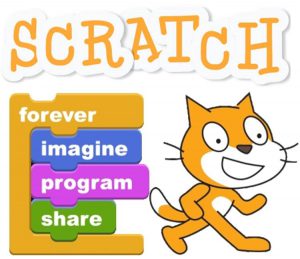
Lego Mindstorms is a more expensive option that the Library Commission uses through the Library Innovation Studios project. If your library wants to test out a powerful, free block-based programming interface, check out Scratch, made by MIT Media Lab. Scratch will let you program online stories, games, and animations. For free.
When learners want to expand their coding capabilities, they can transition over to text-based coding. Some good beginner options to look into are HTML and CSS coding to make a standard website from scratch. Add in Javascript to add more interactive features to the website. These links will send you to a YouTube video for freeCodeCamp.org, each video has a link to a written curriculum option as well. There are a lot of other coding languages out there, but it’s difficult to choose a language until you know what you want to do with it.
Rather th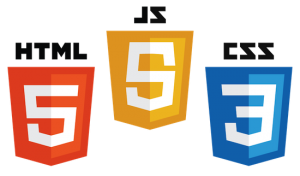 an get bogged down in which language to learn, libraries can focus on how to learn. The best thing we can all learn is how to break complex information into smaller, more manageable steps to learn from the ground up. After people learn how to think like a programmer, they can decide what they want to learn more about. When people know where their interests lie, they can choose a program to suit their needs. Choosing a language without a purpose is a great way to quit before you start.
an get bogged down in which language to learn, libraries can focus on how to learn. The best thing we can all learn is how to break complex information into smaller, more manageable steps to learn from the ground up. After people learn how to think like a programmer, they can decide what they want to learn more about. When people know where their interests lie, they can choose a program to suit their needs. Choosing a language without a purpose is a great way to quit before you start.
To encourage people to learn to code, try to connect them with good reasons to code. Technology is being used in multiple industries right now. People of any age or subject interest have a reason to learn programming. I will talk about more motivations to learn coding in future posts. Stay tuned.
Posted in General, Pretty Sweet Tech, Technology
Leave a comment
Pretty Sweet Tech: What is Digital Literacy?
Digital literacy has taken the library world by storm! What is digital literacy, you may ask. You will likely get a slightly different answer from every person you ask. The concept has also been called multiple literacies, technology literacy, 21st Century Skills, and similar.
What it all boils down to is that we are all trying to prepare students and all library patrons for the rapidly evolving digital world. There are 81 years left of the 21st Century. Nobody knows what the future will hold. But experts in digital and technology literacy have an educated guess as to the skills people will need going forward.
Here’s what the International Society for Technology in Education has come up with after working with a variety of leaders in education (excerpted from this table):
- Empowered Learner

- Digital Citizen
- Knowledge Constructor
- Innovative Designer
- Computational Thinker
- Creative Communicator
- Global Collaborator
For a description of what all of those mean, check out the ISTE Standard’s website. This will provide information for what students should know, how educators can prepare, and how coaches/ professional development assistants can prepare for the future. There is also information about Computer Science Standards on this website for those who want to dive a little deeper into the wonderful world of coding and the process of creating or adapting technology. Be forewarned, it’s a lot. And it won’t all happen overnight.
We all have a long way to go before we’re all ready for the rest of the 21st Century, but we’ll get there eventually. As we move forward into the technology revolution, take a moment to think about how much technology is too much technology. Be selective about what is probably just a fad and which tools might gain momentum and be worth your time and effort. Do the best you can, mistakes will happen, and the world will keep on turning. Keep in mind that just because a new technology exists, doesn’t mean we have to use it.
Students will still need to know how to use a paper and pen by the end of all this. Soft skills and social skills will be more important than ever as people become tempted to isolate themselves in a digital world. It’s time to find a happy medium between digital and physical tools. We’re only human.
Posted in General, Pretty Sweet Tech, Technology
Leave a comment
Pretty Sweet Tech: To Sync or Not to Sync?
Have you ever opened Google Chrome on your smartphone and filled out a form online? Then when you got home, did you try to fill out another form and have the blanks automatically fill in? That wasn’t an accident. When you sync your devices or accounts together, Google is able to share information between those devices. Sometimes this is helpful. Other times, not so much.
Google is very transparent about which types of data it collects: https://safety.google/privacy/data/. This site will give you a rundown of the types of data that are stored and how Google says they use the information. There are just a couple points I want to touch on here.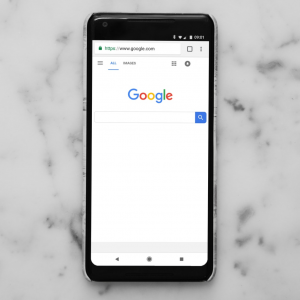
1. When you download Google Chrome, it will ask if you want to sync your Google account to this particular browser. When you’re on a home or personal computer, this can be helpful. But if you’re loading Chrome on a work or shared computer, you don’t necessary want everyone using that computer to have access to your Google search history, photos, personal information, and anything stored in Google’s information banks.
If you’ve already synced Google Chrome at work with your Google accounts at home, fear not! Here are instructions to unsync your accounts. With just a few clicks, you can make your forms stop autofilling your home address.
2. The other quick tidbit is about using Google Docs at home and at work. Feel free to make two separate accounts through Google docs. Then you can remove your home account from your work account. Here’s how to delete your Google Account Information from a device.
Protecting patron search and material use history is important in libraries. Librarians should have the same protections! Remember, your privacy is your own.
Pretty Sweet Tech: Facebook Login on Third-Party Sites
 Have you ever been on a website that asks you to login using Facebook? This usually appears as a quick one-click button that lets you link this app to Facebook so you don’t have to manually enter a lot of your own information into the new website. So how do websites get this button on their website?
Have you ever been on a website that asks you to login using Facebook? This usually appears as a quick one-click button that lets you link this app to Facebook so you don’t have to manually enter a lot of your own information into the new website. So how do websites get this button on their website?
It’s surprisingly easy. Take a look at the Facebook Login Overview on Facebook for Developers. Any website can use the Login if they only need access to a user’s public profile and email address. The overview states that “to ask for any other permission, your app will need to be reviewed by Facebook before these permission become visible in the Login Dialog to the public who’re logging into your app with Facebook”.
Looking at their App Review process, apps have to submit a request on a feature by feature basis and match that request to the product offered on their site. Businesses also need to verify their business identity. Businesses also have to sign a usage agreement.
That is somewhat reassuring, but let’s rewind a bit here. Any business, verified or unverified can use this Login feature to gain access to the public profile. Think about what’s on your public profile: a cover photo, gender, networks, schools attended, age range, language, country, and any information that appears on public searches. Imagine what companies can do with some of this information.
Some of these third-party websites may also sync up with Facebook to post some of the information from their app on your profile’s timeline. For example, Goodreads is a very popular website among librarians. Depending on how you set up your Goodreads account, you may have given Goodreads permission to automatically post your completed books to your timeline. Do you want all of your Facebook friends to know everything you read?
If you’ve already accidentally synced an app with your Facebook profile, there are usually ways to undo or change the settings. Here’s Goodread’s Help page if you want to take a look at the permission shared between Goodreads and Facebook. They also provide information about how to adjust the settings.
Posted in General, Pretty Sweet Tech, Technology
Leave a comment
Pretty Sweet Tech: Drones in the Library!
One day, drones may deliver library books to home bound library patrons. That day may come sooner than you’d think.
Drones are Unmanned Aerial Vehicles (UAVs) and can be controlled remotely or fly autonomously through the use of a pre-programmed flight plan. These drones use sensors to control their flight path and to collect various types of data. This data can range from weather information to chemical emissions to a collection of photographs.
Today, drones are being used in the military, by landscapers, construction workers, farmers, artists, researchers, and just about every industry known to man. So how are they being used in the library? Here are a few examples:
Drones on Loan: People want to learn about drones and take them for a test drive. The Arapaho Library has 4 copies of a Hover Camera Passport Drone available in their regular catalog. Georgia Highlands College has a similar system in place. If you would like to replicate this in your library, try testing out demonstrations with one drone and gather patron interest. If there’s interest, it might be time to update your loan policy to cover damage and incidentals on a drone for loan!
Delivery Drones: Right now, Amazon is pilot testing a delivery drone. Their website says their drones are “designed to safely get packages to customers in 30 minutes or less using unmanned aerial vehicles” using Prime Air. It’s not hard to imagine how these could come in handy for libraries one day.
Drone Demonstrations: You can also do some drone demonstrations in the library. This might take a bit of practice to get the controls down, but it’s definitely possible! It’s quite probably you could find an enthusiastic patron who has experience that might want to teach a few classes in the library.
Posted in General, Pretty Sweet Tech, Technology
Leave a comment



